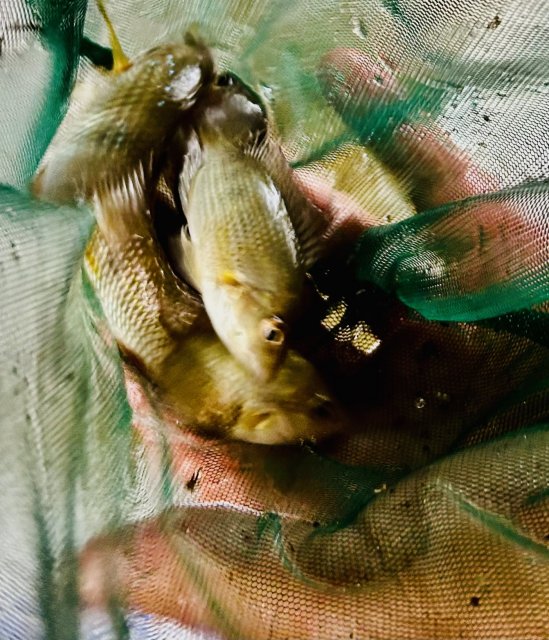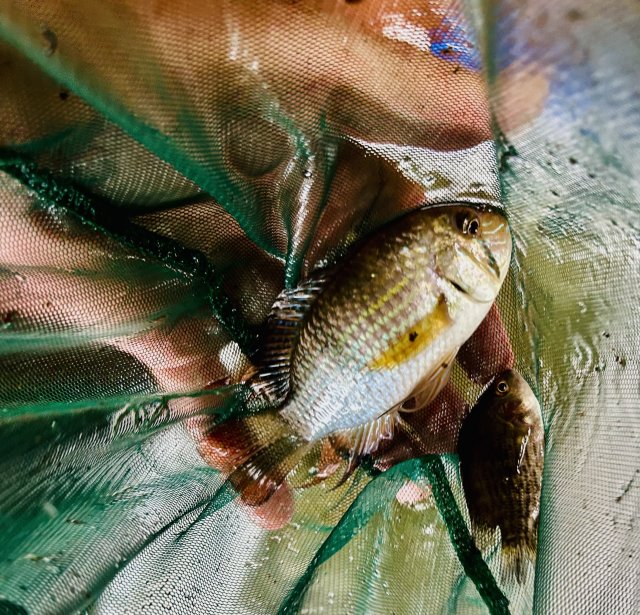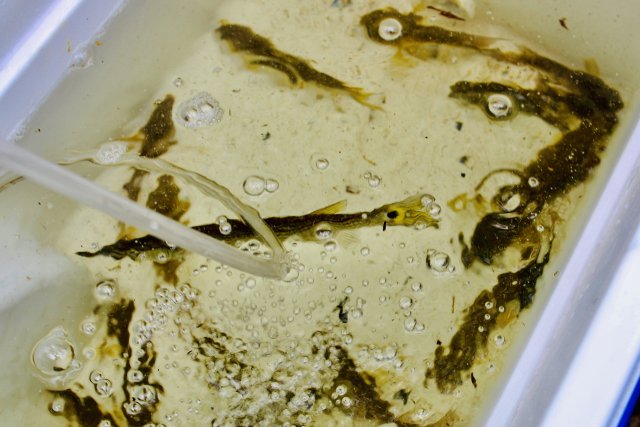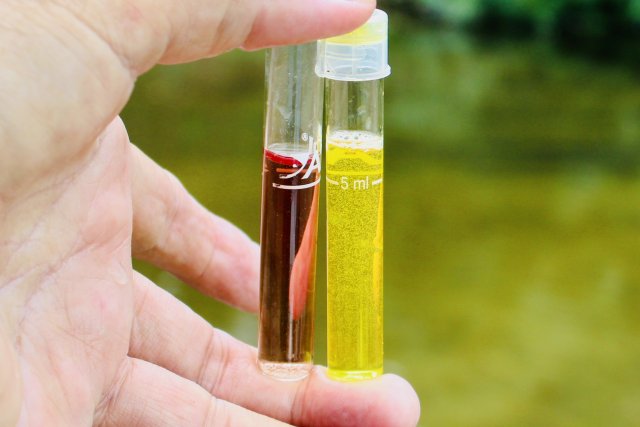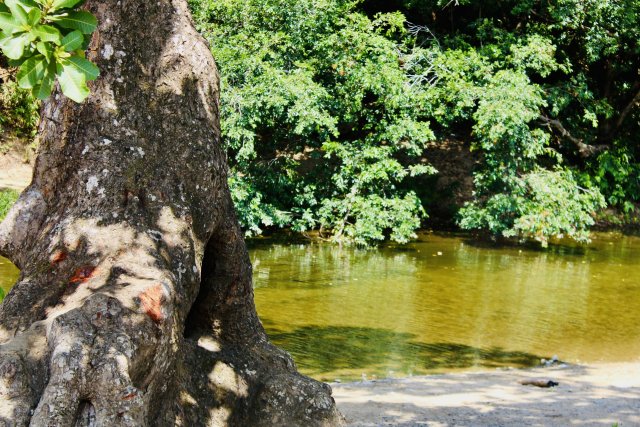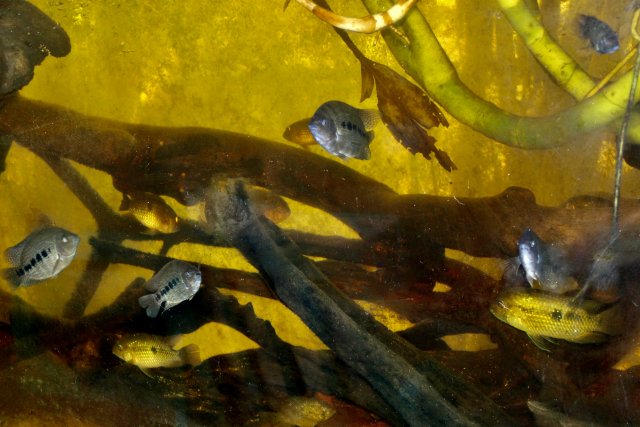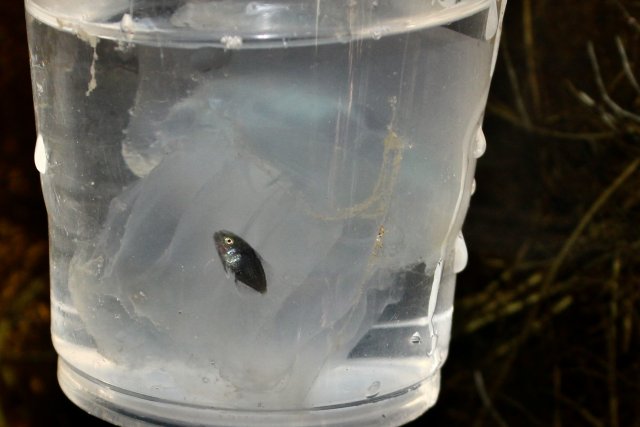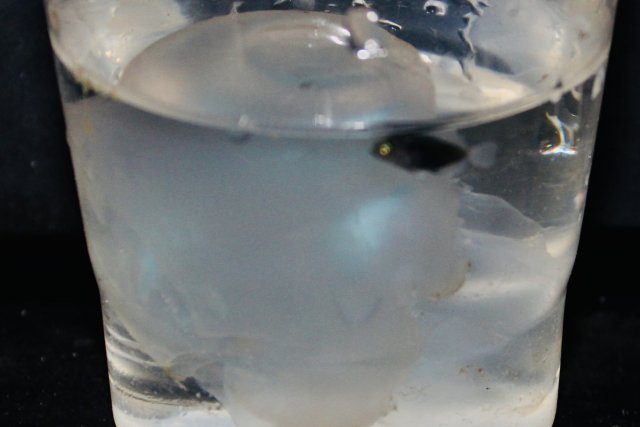It is common practice when keeping African cichlids, that overcrowding is often a key to success in those biotope type tanks.
In Central American tanks, this “usually”: works as a kiss of death, and presumably only feasible until maturity sets in, then often, the community dynamic quickly goes south, when territoriality usurps the need for safety in numbers.
But many successful African aquarists don’t simply combine cichlids randomly, instead… they adhere to specific species combinations that allow certain trophic feeding preferences to prevail. Combining specific combinations that will be compatible within the known boundaries, of a certain limited space.
These may be due to different species-specific algal or prey taste preferences.
Where one species crops specific algal species, another species follows close behind picking out different algal types only exposed by the first species that pass.
This natural agricultural rotation is beneficial to both species, and prevents antagonistic competition of valuable resources.
As an example as Taeniolethrinops prorbiltails sifts thru sand (not unlike South American geophagines, or Central American Thorichthys or Cribroheros) and it is often followed close by Cyrtiocara moori which picks up the leftovers.
A question then arises for me?
Have new world (especially Central American cichlids) evolved similar advantageous trophic processes within there chosen biotope areas?
And if so,…. are we short sighted in our random aquarium cichlid combinations, and geographic un-awareness?
there combinational rules that could help determine success or failure in tese new world species tanks?
I have been collecting cichlids in a river system in eastern Panama, where I have encountered only 2 cichlid species.
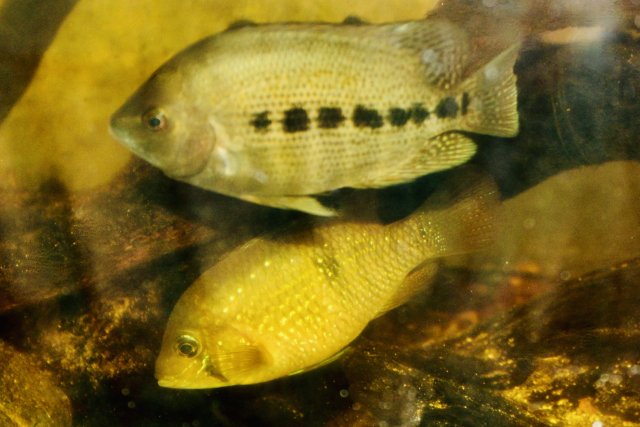
Have these two species instinctually worked out a strategy that allows each to survive simultaneously without stepping on each others toes, and without conflict?
In these particular rivers, Rio Las Lotes, Rio Pacora, Rio Utive, and Rio Cadre Bre, (where so far) I have only caught 2 cichlid species, within months of collecting forays. There are plenty of “non”-cichlids, but only 2 cichlids, Andinoacara coerleopunctatus, and Isthmoheros tuyrense have been captured.
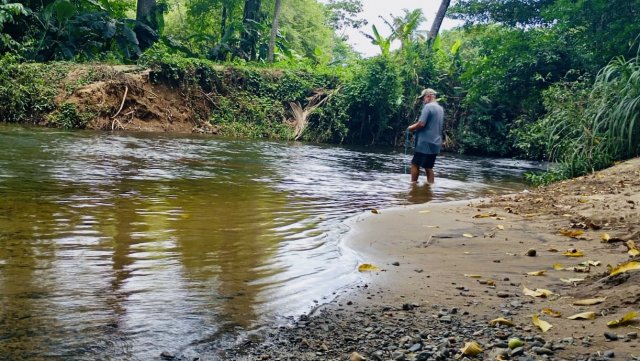
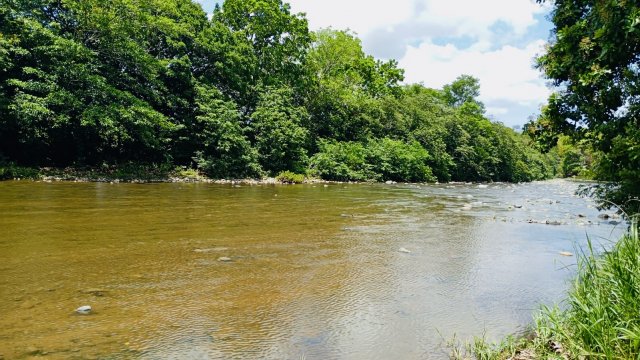
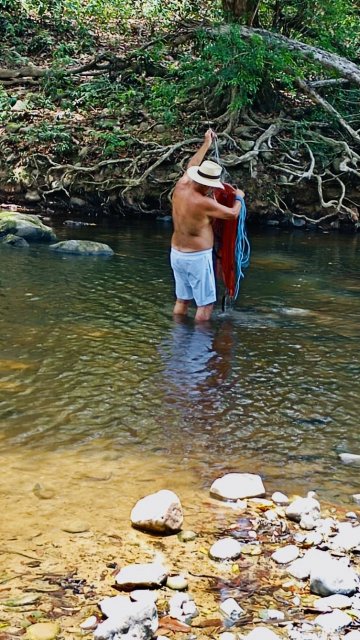
So about a year ago I put a number of juvies, (1” to 2.5”) of, these two species, in a 180 gal tank, and have been observing interactions. within the group ever since.
At the size they are now, (3.5” to 5”) maturity is on the horizon, so at this point normal cichlid territoriality should begin to be apparent, unless a sort of detente is in the offing.
The only other denizen of the tank is at the moment, a lone Ctenolucius beani.
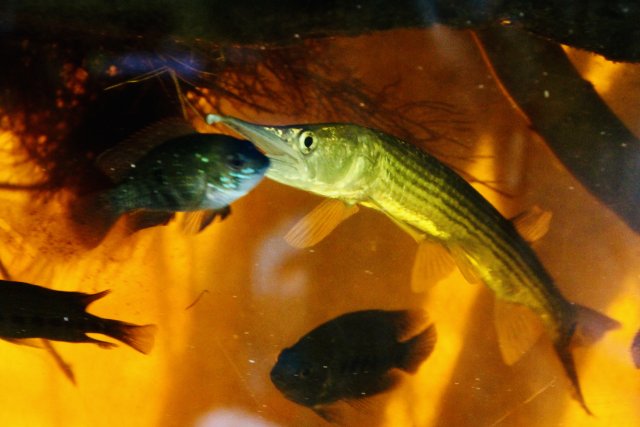
Although both species consume preferred aquarium fare, the Veija like Istmoheros grazes naturally on algae on sunken wood, even algae of the glass.
There are reports of a similar symbiotic relationship with Parachromis dovii and Hypsophrys nicaraguensis, where adult nic’s, will guard dovii fry, while the dovii hunt, protecting fry from mauruading Nemtroplus.
Since I have never had enough tank space to properly house dovii and another species together, I have not tried this.
But in my current 180 these two species (Andinoacara, ad Isthmoheros both medium speccies) may work.
Only time will tell.
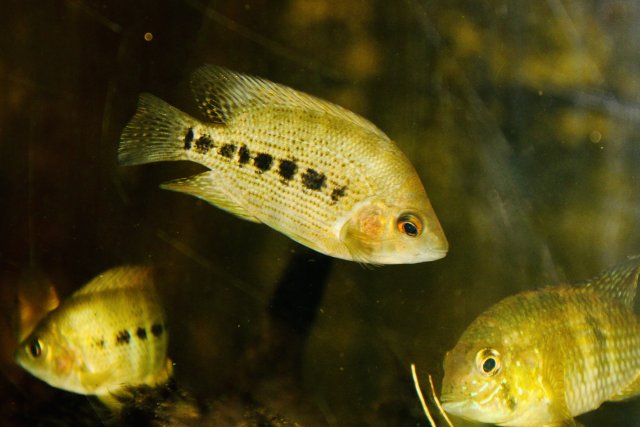
In Central American tanks, this “usually”: works as a kiss of death, and presumably only feasible until maturity sets in, then often, the community dynamic quickly goes south, when territoriality usurps the need for safety in numbers.
But many successful African aquarists don’t simply combine cichlids randomly, instead… they adhere to specific species combinations that allow certain trophic feeding preferences to prevail. Combining specific combinations that will be compatible within the known boundaries, of a certain limited space.
These may be due to different species-specific algal or prey taste preferences.
Where one species crops specific algal species, another species follows close behind picking out different algal types only exposed by the first species that pass.
This natural agricultural rotation is beneficial to both species, and prevents antagonistic competition of valuable resources.
As an example as Taeniolethrinops prorbiltails sifts thru sand (not unlike South American geophagines, or Central American Thorichthys or Cribroheros) and it is often followed close by Cyrtiocara moori which picks up the leftovers.
A question then arises for me?
Have new world (especially Central American cichlids) evolved similar advantageous trophic processes within there chosen biotope areas?
And if so,…. are we short sighted in our random aquarium cichlid combinations, and geographic un-awareness?
there combinational rules that could help determine success or failure in tese new world species tanks?
I have been collecting cichlids in a river system in eastern Panama, where I have encountered only 2 cichlid species.

Have these two species instinctually worked out a strategy that allows each to survive simultaneously without stepping on each others toes, and without conflict?
In these particular rivers, Rio Las Lotes, Rio Pacora, Rio Utive, and Rio Cadre Bre, (where so far) I have only caught 2 cichlid species, within months of collecting forays. There are plenty of “non”-cichlids, but only 2 cichlids, Andinoacara coerleopunctatus, and Isthmoheros tuyrense have been captured.



So about a year ago I put a number of juvies, (1” to 2.5”) of, these two species, in a 180 gal tank, and have been observing interactions. within the group ever since.
At the size they are now, (3.5” to 5”) maturity is on the horizon, so at this point normal cichlid territoriality should begin to be apparent, unless a sort of detente is in the offing.
The only other denizen of the tank is at the moment, a lone Ctenolucius beani.

Although both species consume preferred aquarium fare, the Veija like Istmoheros grazes naturally on algae on sunken wood, even algae of the glass.
There are reports of a similar symbiotic relationship with Parachromis dovii and Hypsophrys nicaraguensis, where adult nic’s, will guard dovii fry, while the dovii hunt, protecting fry from mauruading Nemtroplus.
Since I have never had enough tank space to properly house dovii and another species together, I have not tried this.
But in my current 180 these two species (Andinoacara, ad Isthmoheros both medium speccies) may work.
Only time will tell.




